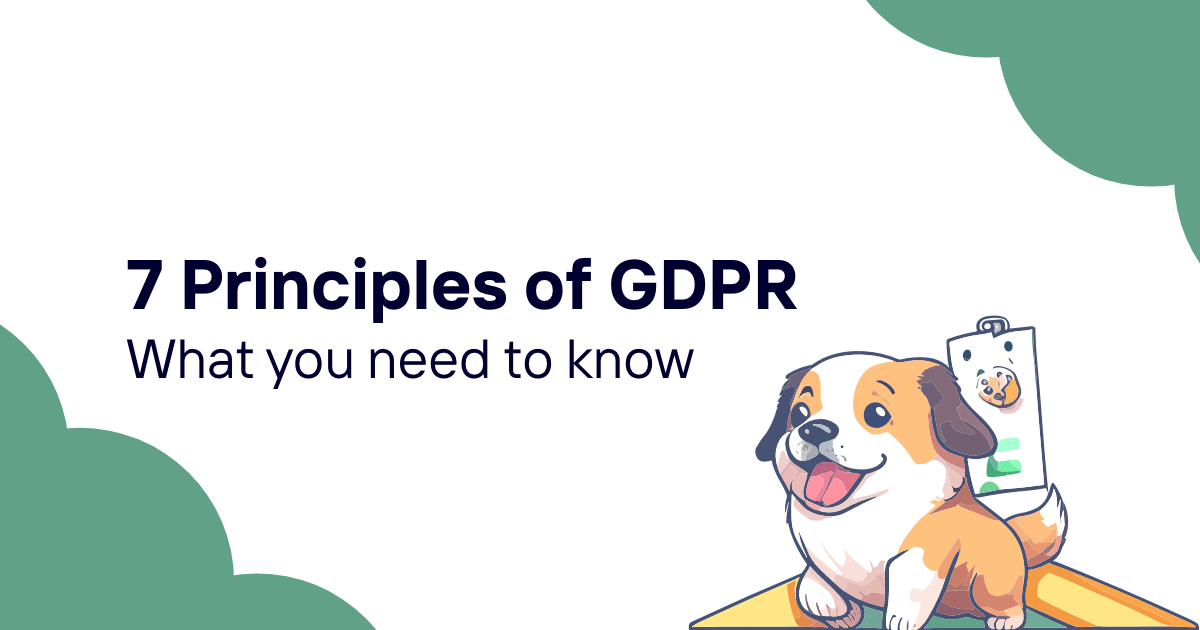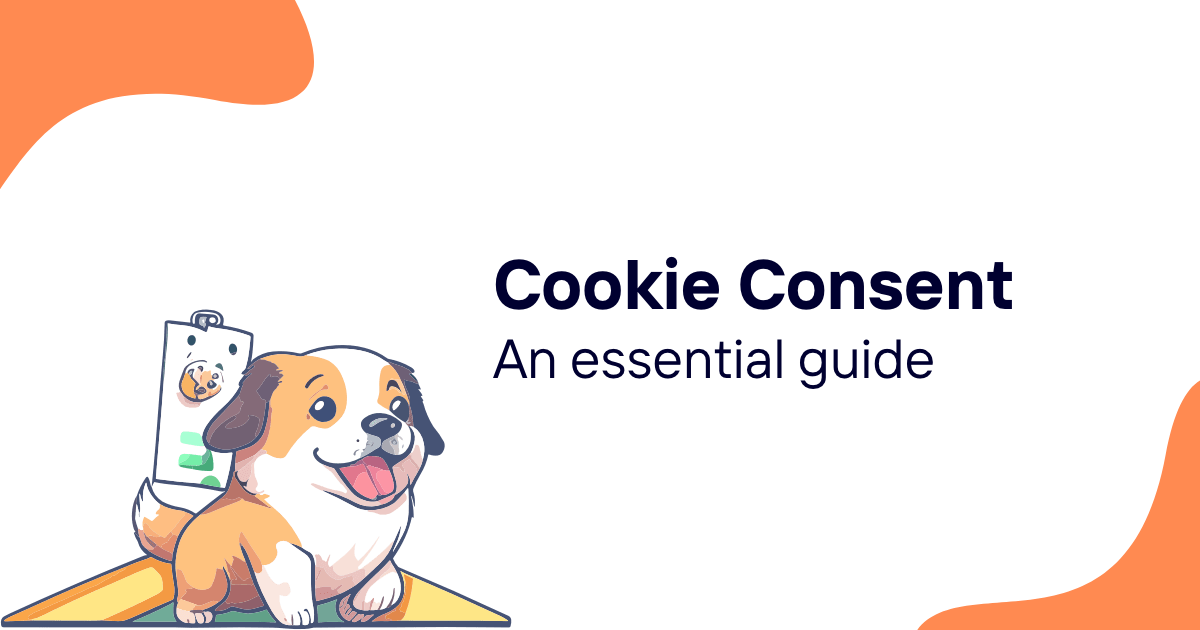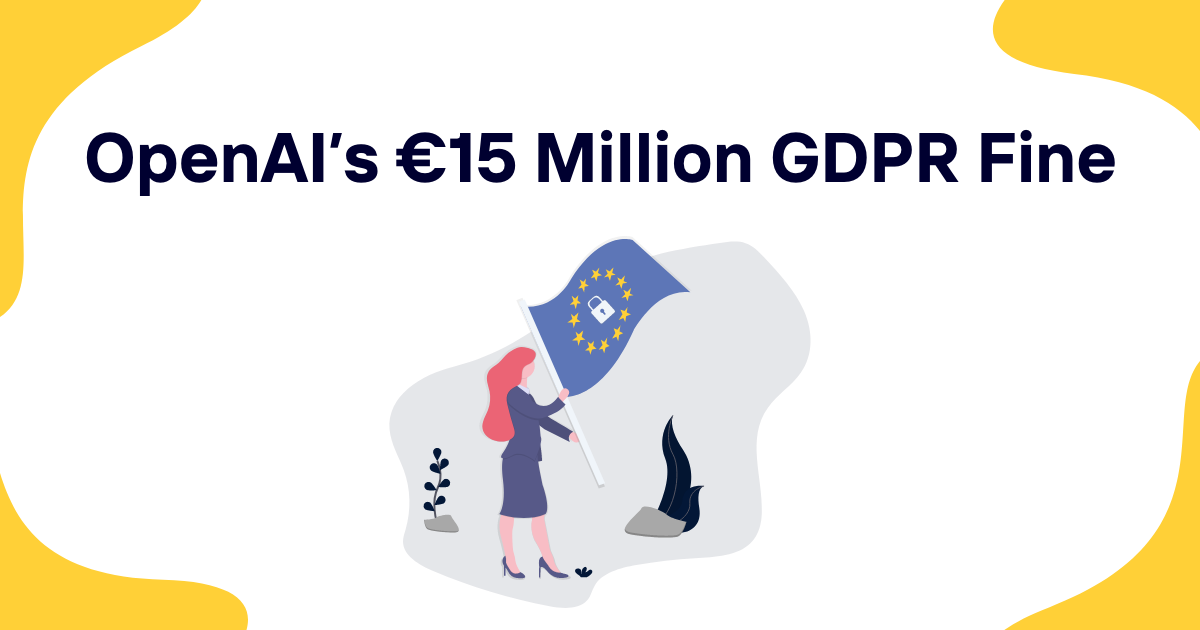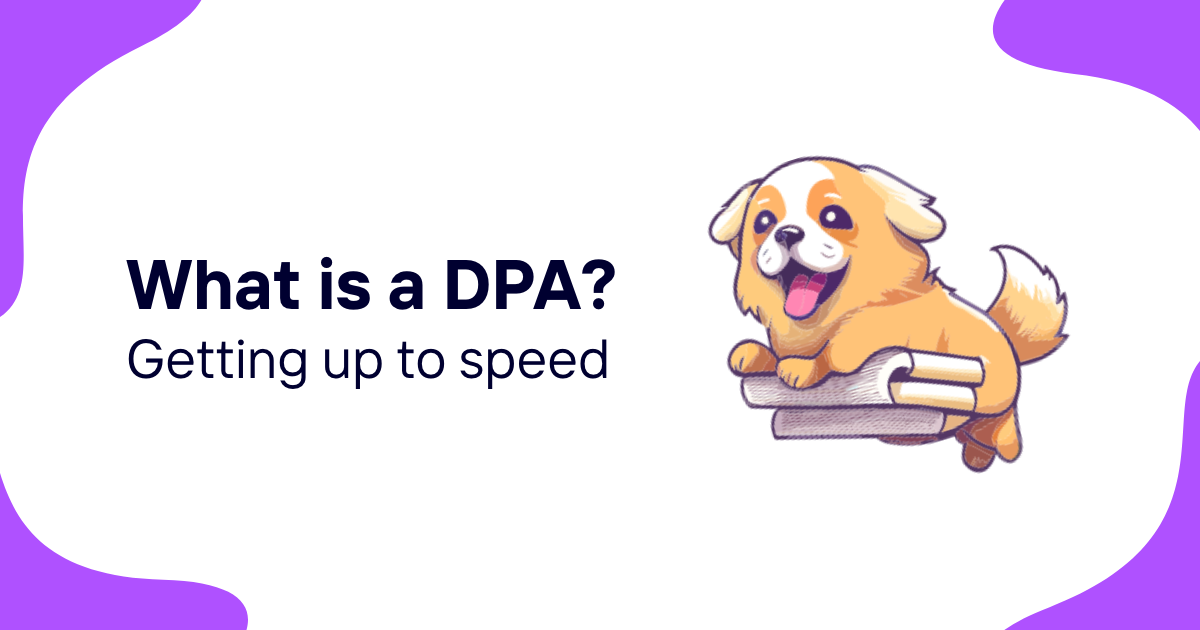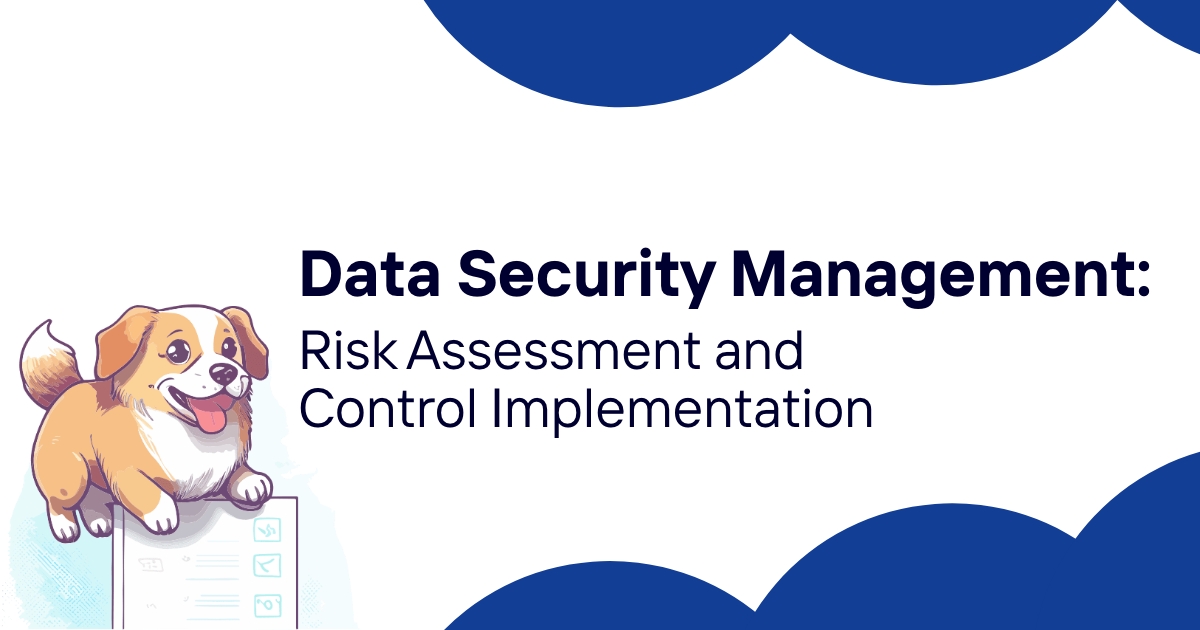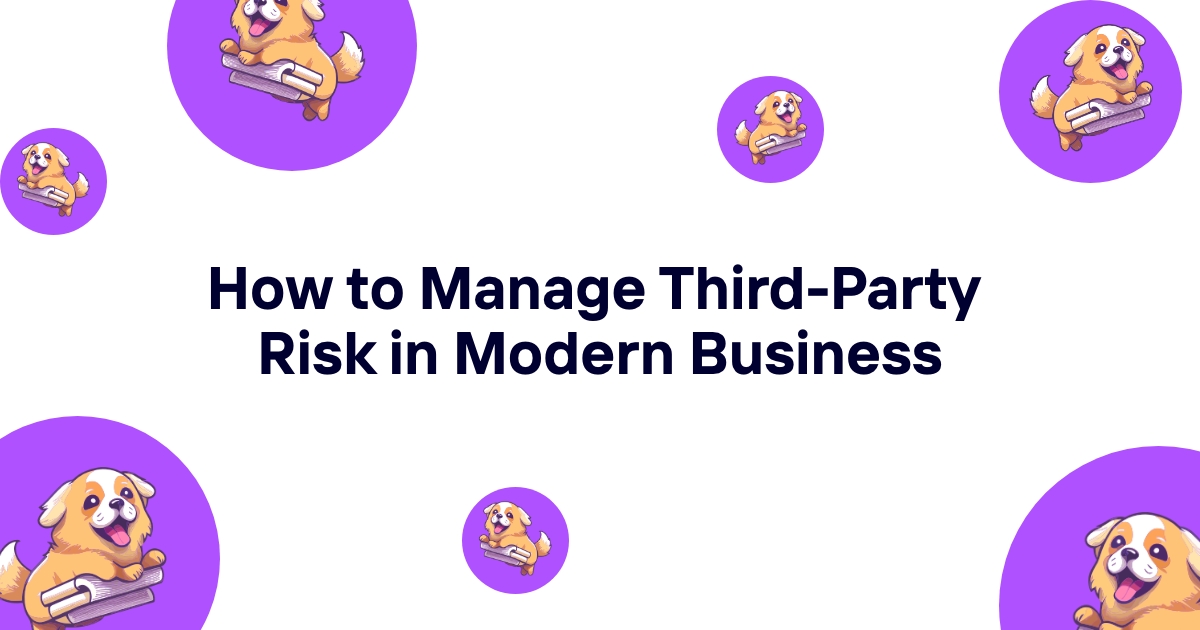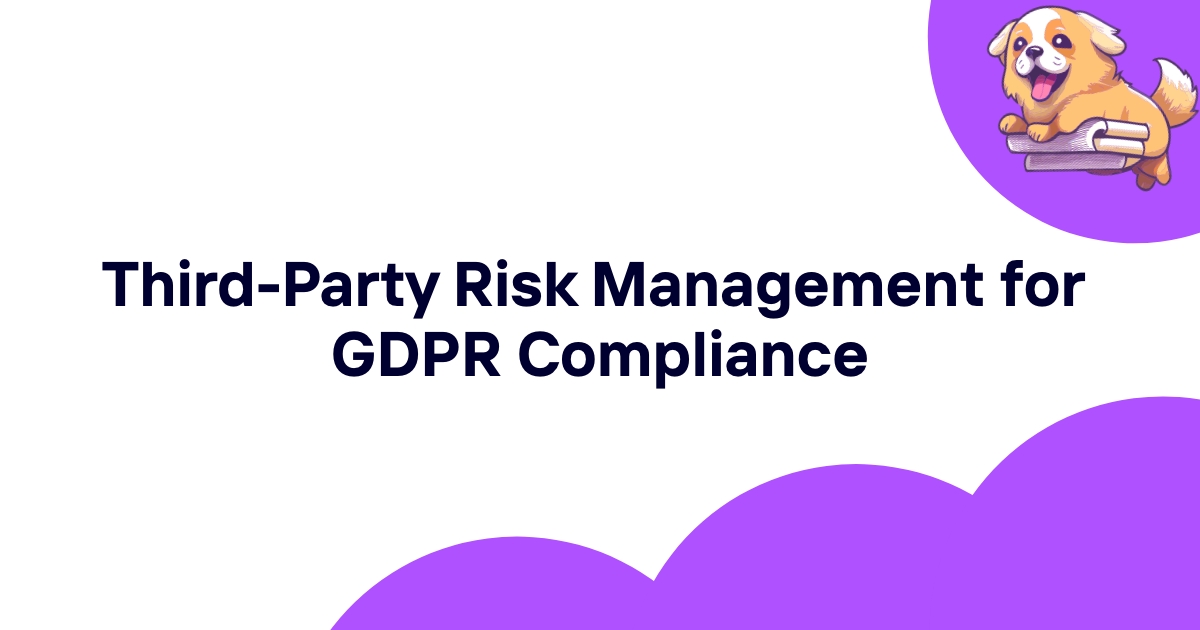Third-party vendors have become an integral part of modern business operations, handling everything from customer support to payment processing. But this convenience comes with a hidden cost: vendor privacy risks that can expose organizations to significant legal, financial, and reputational consequences.
Think about it – every time you share customer data with a vendor, you're essentially placing your organization's compliance posture in their hands. One poorly configured database, one overlooked data transfer, or one inadequately trained vendor employee could trigger a privacy breach that costs millions in fines and damages your brand reputation.
The challenge isn't just identifying these risks. It's the fact that most organizations are flying blind when it comes to their vendor ecosystem's privacy practices. You might know what services your vendors provide, but do you really know how they handle personal data behind the scenes?
Table of contents
- Why vendor privacy risks matter more than ever
- Types of vendor privacy risks
- Data processing and storage risks
- Compliance and regulatory risks
- Cross-border data transfer challenges
- Subprocessor and fourth-party risks
- Security and breach risks
- Operational and governance risks
- Financial and reputational impacts
- Building effective vendor privacy risk management
- Vendor assessment strategies
- Ongoing monitoring and compliance
- Technology solutions for vendor risk management
Why vendor privacy risks matter more than ever
Privacy regulations like GDPR have fundamentally changed how businesses think about data responsibility. Under these frameworks, you remain liable for how your vendors handle personal data – even if you're not directly involved in the processing activities.
This concept of "joint controllership" or "processor liability" means that a vendor's privacy failure becomes your privacy failure. When your email marketing provider experiences a data breach, or your customer support platform fails to honor deletion requests, regulators will come knocking on your door too.
The numbers tell the story. Privacy fines reached record levels in recent years, with many penalties stemming from vendor-related incidents. Organizations discovered that their carefully crafted privacy policies and internal controls meant little when a third-party partner fell short of compliance standards.
But the financial impact represents just the tip of the iceberg. Customer trust, once damaged by a vendor-related privacy incident, can take years to rebuild. B2B relationships suffer when clients lose confidence in your data handling practices. And the operational disruption of investigating and remedying vendor privacy failures can paralyze business operations for weeks or months.
Types of vendor privacy risks
Data collection and usage risks
Vendors often collect more data than they initially disclose. That innocent-looking analytics tool might be harvesting IP addresses, device fingerprints, and behavioral patterns that qualify as personal data under privacy regulations.
The real danger lies in scope creep. Vendors frequently expand their data collection practices through software updates or service modifications without notifying their customers. What started as basic contact information processing suddenly includes detailed user profiling and cross-platform tracking.
Secondary use of data presents another major risk area. Vendors might use customer data for their own business purposes – training AI models, conducting market research, or improving their services. While these activities might seem harmless, they often require specific consent or legal basis that wasn't established in the original agreement.
Processing purpose limitations
Privacy laws require that data processing serves specific, legitimate purposes that are clearly communicated to data subjects. Vendors sometimes struggle with this principle, especially when their business model depends on extracting maximum value from available data.
Purpose creep happens gradually. A vendor hired to provide customer support might start analyzing call transcripts for sales insights. A payment processor might begin using transaction data for fraud prevention across their entire client base. These expanded purposes often lack proper legal justification.
The challenge becomes even more complex with AI-powered vendors. Machine learning algorithms inherently discover new patterns and correlations in data, which could constitute processing for purposes beyond the original scope. Organizations must carefully evaluate whether their vendor agreements adequately address these technological realities.
Data processing and storage risks
Geographic data residency
Data location matters immensely for privacy compliance. Many privacy regulations require or prefer that personal data stays within specific geographic boundaries. But vendors, especially cloud providers, often replicate data across multiple regions without clear disclosure.
The complexity multiplies with multi-tenant cloud environments. Your data might physically reside in an approved location, but the infrastructure supporting that storage could span multiple jurisdictions. Backup systems, disaster recovery sites, and content delivery networks all introduce potential cross-border data flows.
Vendors sometimes change their data storage practices without notice. A provider that initially stored European customer data exclusively in EU data centers might quietly begin using global cloud infrastructure to improve performance or reduce costs. These changes can invalidate your compliance posture overnight.
Data retention and deletion
Most privacy laws grant individuals the right to have their personal data deleted. But vendor systems often struggle with comprehensive data removal. Data might exist in primary databases, backup systems, log files, cached copies, and archived records spread across multiple systems.
The technical challenges are significant. Modern applications create data dependencies where deleting one record could break functionality for other users. Vendors might resist deletion requests that require extensive system modifications or manual intervention.
Testing deletion capabilities presents another hurdle. How do you verify that a vendor has actually removed all traces of personal data from their systems? Many organizations accept vendor assurances without independent verification, creating compliance blind spots.
Data minimization compliance
Privacy regulations require processing only the minimum amount of personal data necessary for specified purposes. Vendors frequently violate this principle by collecting comprehensive data sets "just in case" they might prove useful later.
The temptation to over-collect is particularly strong with SaaS platforms that offer multiple features. A CRM system might request access to email accounts, calendar data, social media profiles, and document repositories, even if only basic contact management is needed.
Vendors also struggle with data minimization over time. Systems accumulate personal data that's no longer relevant to active business purposes but remains accessible for historical reporting or analysis. Regular data purging requires ongoing attention that many vendors neglect.
Compliance and regulatory risks
Multi-jurisdictional requirements
Organizations operating across multiple regions must ensure their vendors comply with varying privacy requirements. European GDPR, California CPRA, Brazilian LGPD, and other frameworks each impose unique obligations that vendors must understand and implement.
The challenge isn't just knowing which laws apply – it's ensuring vendors can adapt their practices to meet different requirements for different customer segments. A vendor serving both EU and US customers might need to implement different consent mechanisms, data retention periods, and individual rights procedures.
Regulatory changes add another layer of complexity. Privacy laws continue evolving, with new requirements and enforcement guidance emerging regularly. Vendors must stay current with these changes and update their practices accordingly, but many lack the legal expertise or operational flexibility to respond quickly.
Consent management complications
Valid consent under modern privacy laws requires clear, specific, informed, and freely given agreement. Vendors often implement consent mechanisms that fail one or more of these criteria, exposing their customers to compliance risks.
Pre-checked boxes, bundled consent for unrelated purposes, and consent requests buried in lengthy terms of service all create potential violations. The situation becomes more complex when vendors collect consent on behalf of their customers, as the quality and validity of that consent directly impacts the customer's compliance status.
Consent withdrawal poses additional challenges. Privacy laws generally require that withdrawing consent should be as easy as giving it, but many vendor systems make consent withdrawal difficult or impossible. Some vendors treat consent withdrawal as a service termination request, forcing customers to choose between privacy compliance and continued service access.
Individual rights fulfillment
Privacy regulations grant individuals various rights regarding their personal data – access, correction, deletion, portability, and objection to processing. Vendors must be able to honor these requests within strict timeframes, typically 30 days or less.
The technical infrastructure required to fulfill individual rights requests is substantial. Vendors need systems to identify all personal data related to specific individuals, extract that data in readable formats, make necessary corrections, or permanently delete records across all systems.
Many vendors struggle with request verification. How do you confirm that someone requesting data access is actually the person they claim to be? Inadequate verification could lead to unauthorized data disclosure, while overly strict verification might prevent legitimate individuals from exercising their rights.
Cross-border data transfer challenges
International transfer mechanisms
Moving personal data across international borders requires specific legal safeguards under most privacy frameworks. The EU's Standard Contractual Clauses (SCCs), adequacy decisions, and Binding Corporate Rules (BCRs) provide different mechanisms for lawful data transfers.
Vendors often misunderstand or misapply these transfer mechanisms. Simply including SCCs in a contract isn't sufficient – the clauses must be properly implemented with appropriate technical and organizational measures to ensure data protection standards are maintained.
The geopolitical landscape adds unpredictability to international data transfers. Government surveillance programs, data localization requirements, and diplomatic tensions can suddenly invalidate previously acceptable transfer mechanisms. Vendors need contingency plans for these scenarios.
Third-country adequacy decisions
The European Commission's adequacy decisions recognize certain countries as providing adequate data protection levels, allowing unrestricted personal data transfers. But these decisions can be revoked or challenged, as happened with Privacy Shield in 2020.
Vendors relying on adequacy decisions for their data transfer strategy face sudden compliance gaps when these frameworks change. The Schrems II decision, which invalidated Privacy Shield, left many organizations scrambling to implement alternative transfer mechanisms.
Even countries with adequacy decisions may not provide equivalent protection for all types of data processing. Government access to personal data, surveillance programs, and national security exceptions can create compliance risks that adequacy decisions don't fully address.
Subprocessor and fourth-party risks
Supply chain transparency
Modern vendor relationships often involve complex supply chains where your direct vendor relies on multiple subprocessors to deliver their services. Each additional layer introduces potential privacy risks that may not be visible in your primary vendor contract.
Subprocessor agreements frequently lack the same privacy protections found in primary vendor contracts. A vendor might agree to comprehensive data protection obligations but then engage subprocessors under less stringent terms, creating compliance gaps.
The challenge becomes particularly acute with cloud infrastructure providers. Your vendor might use Amazon Web Services, which in turn relies on hardware vendors, network providers, and facility management companies. Each entity in this chain could potentially access personal data, but mapping these relationships requires significant effort.
Change notification processes
Privacy regulations often require notification when new subprocessors are engaged for personal data processing. But vendor notification processes frequently fall short of regulatory requirements, providing insufficient detail or inadequate advance notice.
Some vendors interpret "notification" as simply updating a web page listing their subprocessors without directly informing customers. Others provide notifications but don't include sufficient information about the new subprocessor's role, location, or data access requirements.
The right to object to new subprocessors creates additional complications. If you object to a vendor's proposed subprocessor, what alternatives do they offer? Many vendors don't have backup plans for customer objections, leading to service disruptions or forced acceptance of unsuitable arrangements.
Fourth-party risk assessment
Fourth parties – the subprocessors of your subprocessors – represent an often-overlooked risk category. Your primary vendor might have excellent privacy practices, but their subprocessors might engage additional parties that don't meet your standards.
Traditional vendor management programs rarely extend to fourth-party relationships. You might conduct thorough due diligence on your direct vendors but have no visibility into their supply chain partners. This creates blind spots where privacy risks can accumulate undetected.
Contractual liability for fourth-party actions varies significantly. Some vendor agreements hold the primary vendor responsible for all subprocessor actions, while others limit liability to direct subprocessors only. Understanding these distinctions is crucial for effective risk management.
Security and breach risks
Incident response coordination
When privacy breaches occur at vendor locations, the response coordination becomes critical for minimizing damage and meeting regulatory notification requirements. Many vendor agreements lack clear incident response procedures, creating confusion during actual breach scenarios.
Breach notification timelines under privacy laws are strict – often requiring notification within 72 hours of discovery. But vendors might take days or weeks to investigate incidents before notifying customers, making compliance with these timeframes impossible.
The quality of breach notifications varies dramatically between vendors. Some provide comprehensive details about affected data, potential impact, and remediation measures. Others offer vague notifications that make it difficult to assess customer impact or determine appropriate response measures.
Forensic investigation support
Privacy regulators often require detailed forensic analysis of breach incidents to understand root causes and prevent recurrence. Vendors must be able to support these investigations without destroying evidence or compromising ongoing operations.
Many vendor agreements don't address forensic investigation rights. Can you require your vendor to preserve log files and system snapshots? Do you have the right to engage independent forensic investigators? These questions often go unanswered until a breach occurs.
The cost and responsibility for forensic investigations create additional complications. Comprehensive forensic analysis can cost hundreds of thousands of dollars and disrupt vendor operations for weeks. Determining who pays these costs and how to minimize operational impact requires careful planning.
Insurance and liability coverage
Vendor privacy breaches can generate massive financial liabilities through regulatory fines, customer lawsuits, and business disruption costs. Understanding which party bears these risks and ensuring adequate insurance coverage is fundamental to vendor risk management.
Many vendor agreements include liability caps that might not reflect the true cost of privacy breaches. A vendor might limit their liability to the annual contract value, but regulatory fines alone could exceed that amount by orders of magnitude.
Insurance coverage for vendor-related privacy risks is complex and often incomplete. Your organization's cyber liability policy might not cover incidents at vendor locations, while the vendor's policy might not protect your interests. Gap analysis and coordinated coverage planning are essential.
Operational and governance risks
Vendor governance frameworks
Effective vendor privacy risk management requires robust governance frameworks that define roles, responsibilities, and decision-making processes. Many organizations lack these frameworks, leading to inconsistent risk assessment and inadequate oversight.
The challenge intensifies as vendor relationships become more strategic and integrated. Simple transactional relationships might require basic privacy clauses, but partnerships involving deep system integration or shared customer data demand comprehensive governance structures.
Cross-functional coordination between legal, procurement, IT, and business teams is essential but often lacking. Each function brings different perspectives and priorities to vendor relationships, and these differences can create gaps in privacy risk management if not properly coordinated.
Contract lifecycle management
Privacy requirements change throughout vendor relationship lifecycles. Initial contracts might focus on basic data protection clauses, but service expansions, regulatory changes, or business model evolution often require contract amendments that address new privacy risks.
Many organizations struggle with contract amendment processes. Privacy teams might identify new requirements, but getting vendor agreement to contractual changes can take months or years. During this time, ongoing operations might not meet current compliance standards.
Contract renewal cycles provide opportunities to strengthen privacy protections, but they also create risks if vendors resist improved terms. Organizations must balance the desire for better privacy protections with the operational necessity of continuing vendor relationships.
Performance monitoring and metrics
Measuring vendor privacy performance requires metrics that go beyond basic compliance checklists. Organizations need indicators that provide early warning of potential privacy risks before they become actual violations.
Traditional vendor scorecards focus on service levels, cost management, and business outcomes. Privacy metrics often get buried in broader risk assessments or treated as binary pass/fail criteria rather than continuous improvement opportunities.
The metrics that matter most for privacy risk management – incident response times, data subject request fulfillment rates, consent management effectiveness – are difficult to measure without direct access to vendor systems. Creating meaningful privacy performance indicators requires vendor cooperation and transparency.
Financial and reputational impacts
Regulatory penalty exposure
Privacy violations can trigger regulatory investigations and fines that dwarf typical business risks. European GDPR fines can reach 4% of global annual revenue, while other privacy frameworks impose similarly severe penalties for non-compliance.
The calculation of regulatory fines often considers factors beyond the immediate privacy violation. Regulators examine the organization's overall privacy posture, previous violations, cooperation with investigations, and efforts to prevent future incidents. Vendor-related privacy failures can negatively impact all these factors.
Joint liability provisions in privacy laws mean that both organizations and their vendors can face regulatory action for the same incident. This doesn't necessarily reduce individual liability – it can actually increase total exposure if both parties receive separate penalties.
Customer trust and retention
Privacy incidents erode customer trust in ways that traditional service disruptions don't. Customers might tolerate occasional downtime or performance issues, but privacy violations feel personal and create lasting concerns about data safety.
B2B customers increasingly include privacy performance in their vendor selection criteria. Organizations that experience vendor-related privacy incidents might find their own customers conducting more stringent due diligence or seeking alternative providers.
The reputational impact of vendor privacy failures extends beyond immediate customers. Media coverage, regulatory announcements, and industry discussions can damage brand reputation across entire market segments, affecting future business development opportunities.
Business disruption costs
Responding to vendor privacy incidents requires significant organizational resources. Legal teams must analyze contractual obligations and regulatory requirements. IT teams must assess technical impacts and implement remediation measures. Business teams must communicate with affected customers and stakeholders.
The operational disruption can persist long after initial incident response. Privacy investigations might require months of document production, executive interviews, and system analysis. During this time, normal business operations continue but with reduced efficiency and increased stress.
Business relationship impacts might prove more costly than regulatory fines. Key customers might terminate contracts, prospective clients might choose competitors, and partnership opportunities might disappear based on privacy incident concerns.
Building effective vendor privacy risk management
Risk assessment frameworks
Successful vendor privacy risk management starts with comprehensive risk assessment frameworks that evaluate multiple dimensions of privacy exposure. These frameworks should consider data sensitivity, processing purposes, geographic scope, and regulatory requirements.
Risk assessment shouldn't be a one-time activity during vendor selection. Privacy risks evolve as business relationships deepen, service offerings expand, and regulatory requirements change. Regular reassessment helps identify emerging risks before they become compliance violations.
The assessment framework should align with organizational risk tolerance and strategic objectives. A financial services company handling sensitive customer data might apply stricter criteria than a marketing agency processing public information. Risk tolerance should reflect both regulatory requirements and business priorities.
Due diligence processes
Vendor due diligence for privacy risks requires specialized expertise and structured processes. Standard procurement due diligence typically focuses on financial stability, operational capabilities, and service delivery – privacy requires additional technical and legal analysis.
The due diligence process should examine vendor privacy policies, technical architectures, staff training programs, and historical incident records. Document review alone isn't sufficient – organizations should conduct interviews with vendor privacy teams and review actual system configurations.
Third-party security certifications and audit reports provide valuable information but shouldn't substitute for independent analysis. SOC 2 reports might not address specific privacy requirements, and ISO 27001 certification doesn't guarantee compliance with data protection regulations.
Contract negotiation strategies
Privacy clauses in vendor contracts should be specific, measurable, and enforceable. Generic data protection language might satisfy procurement requirements but won't provide meaningful protection when privacy incidents occur.
The negotiation strategy should focus on practical implementation rather than just legal compliance. Detailed breach notification procedures, specific incident response requirements, and clear performance metrics create accountability that generic clauses don't provide.
Vendor resistance to privacy clauses often reflects legitimate operational concerns rather than unwillingness to protect data. Understanding these concerns and developing mutually acceptable solutions requires collaboration between legal, technical, and business teams.
Vendor assessment strategies
Privacy policy analysis
Vendor privacy policies provide the foundation for understanding data handling practices, but they require careful analysis to identify potential risks. Many privacy policies use vague language that obscures actual data processing activities or reserves broad rights for future use.
The analysis should focus on specific processing activities rather than general statements about data protection. What personal data categories does the vendor collect? For what specific purposes? How long is data retained? These operational details matter more than broad privacy commitments.
Inconsistencies between privacy policies and actual vendor practices create significant compliance risks. Organizations should validate privacy policy statements through technical due diligence, contract negotiations, and ongoing monitoring rather than accepting them at face value.
Security assessment integration
Privacy and security assessments should be integrated rather than conducted separately. Many privacy risks – unauthorized access, data breaches, inadequate access controls – have security components that require technical evaluation.
The security assessment should examine how technical controls support privacy objectives. Encryption protects data confidentiality, access controls limit data exposure, and audit logs provide accountability. These technical measures are essential for privacy compliance but require security expertise to evaluate properly.
Penetration testing and vulnerability assessments can reveal privacy risks that document review might miss. Weak authentication systems, inadequate data segregation, and poor configuration management all create privacy exposure that security testing can identify.
Questionnaire design and evaluation
Vendor questionnaires should be tailored to specific privacy risks rather than using generic templates. The questions should reflect organizational privacy priorities, applicable regulatory requirements, and the specific data processing activities involved in the vendor relationship.
Effective questionnaires combine multiple question types – factual inquiries about technical capabilities, process questions about operational procedures, and scenario-based questions about incident response. This multi-dimensional approach provides comprehensive risk assessment information.
Questionnaire responses require careful evaluation and validation. Vendors might provide incomplete or inaccurate responses due to limited privacy knowledge or desire to present their capabilities favorably. Follow-up questions and independent verification help ensure response accuracy.
Ongoing monitoring and compliance
Continuous risk monitoring
Privacy risks change continuously as vendor operations evolve, regulatory requirements develop, and threat landscapes shift. Static risk assessments conducted during vendor onboarding quickly become outdated without ongoing monitoring and reassessment.
Continuous monitoring should track both vendor-reported changes and external indicators of privacy risk. Vendor notifications about service modifications, subprocessor changes, or security incidents provide direct risk information. External sources – regulatory announcements, industry reports, security research – provide broader context about emerging risks.
The monitoring frequency should reflect risk levels and business criticality. High-risk vendors processing sensitive data might require monthly reviews, while low-risk vendors might be assessed annually. The monitoring intensity should also increase during periods of regulatory change or industry disruption.
Performance measurement systems
Measuring vendor privacy performance requires metrics that provide actionable insights rather than just compliance confirmation. Response times for data subject requests, accuracy of data processing activities, and effectiveness of security controls all provide meaningful performance indicators.
The measurement systems should track both quantitative metrics and qualitative assessments. Numbers alone – like percentage of privacy policies reviewed – don't capture the quality of privacy practices or the effectiveness of risk management activities.
Performance measurement should be integrated with broader vendor management systems rather than operating in isolation. Privacy performance should influence overall vendor scorecards, contract renewal decisions, and relationship management strategies.
Incident response coordination
When privacy incidents occur at vendor locations, coordinated response becomes critical for minimizing impact and meeting regulatory obligations. The response procedures should be defined before incidents occur and tested regularly to ensure effectiveness.
Clear communication channels and escalation procedures help avoid delays that can worsen incident impacts. Vendor teams should know exactly who to contact and what information to provide. Internal teams should understand their roles and responsibilities for different incident types.
The incident response coordination should address both immediate response needs and longer-term remediation activities. Initial containment and notification represent just the first phase – comprehensive incident response includes root cause analysis, corrective actions, and process improvements.
Technology solutions for vendor risk management
Modern vendor risk management requires technology solutions that can scale with growing vendor ecosystems and evolving compliance requirements. Manual processes that worked for small vendor portfolios become unsustainable as organizations expand their third-party relationships.
Automated risk assessment tools can standardize evaluation processes and ensure consistent application of privacy criteria across all vendor relationships. These tools should integrate privacy-specific requirements with broader vendor risk management frameworks rather than operating as separate systems.
The technology solutions should support both initial vendor assessment and ongoing monitoring activities. Integration with vendor management systems, contract databases, and incident response platforms creates comprehensive visibility into privacy risks across the entire vendor ecosystem.
Real-time alerting capabilities help organizations respond quickly to emerging privacy risks. Notifications about regulatory changes, vendor security incidents, or compliance deadline approaching enable proactive risk management rather than reactive crisis response.
Comprehensive vendor risk management also requires robust reporting and analytics capabilities. Privacy teams need visibility into risk trends, compliance status, and remediation progress. Executive leadership needs summary reports that highlight key risks and mitigation strategies.
The most effective vendor privacy risk management programs combine technology solutions with human expertise. Automated tools provide scale and consistency, but privacy professionals provide the judgment and strategic thinking necessary for complex risk management decisions.
Organizations that invest in comprehensive vendor privacy risk management capabilities position themselves for success in an increasingly complex regulatory environment. The investment pays dividends through reduced compliance risks, improved vendor relationships, and stronger overall privacy postures.
ComplyDog's comprehensive compliance platform streamlines vendor privacy risk management by automating assessments, monitoring regulatory changes, and providing integrated dashboards for tracking compliance across your entire vendor ecosystem. Visit ComplyDog.com to see how intelligent compliance automation can transform your approach to vendor privacy risk management.

